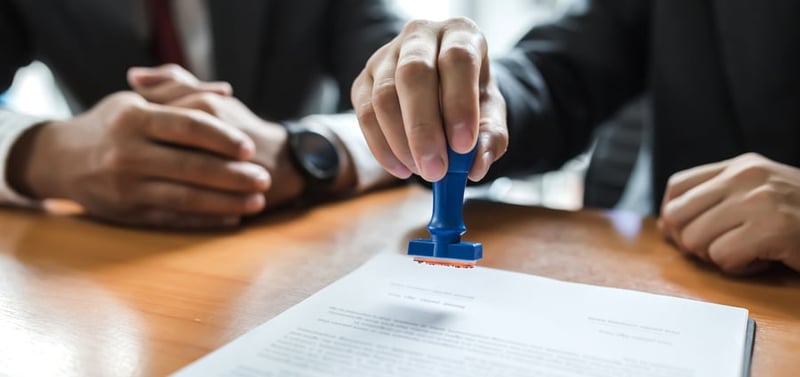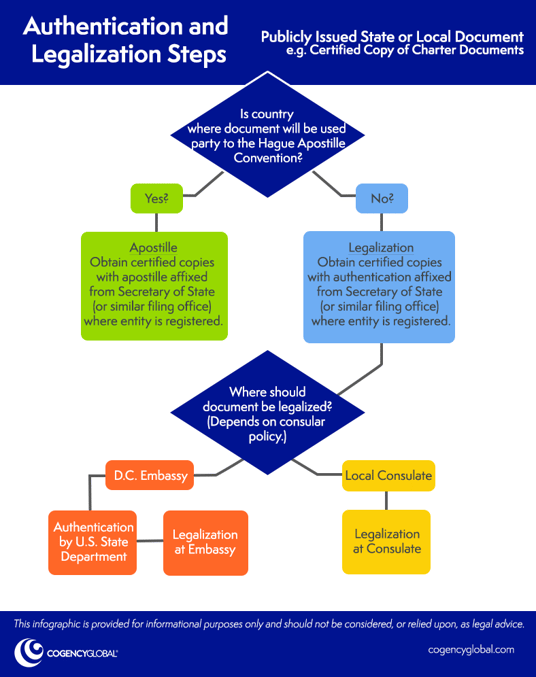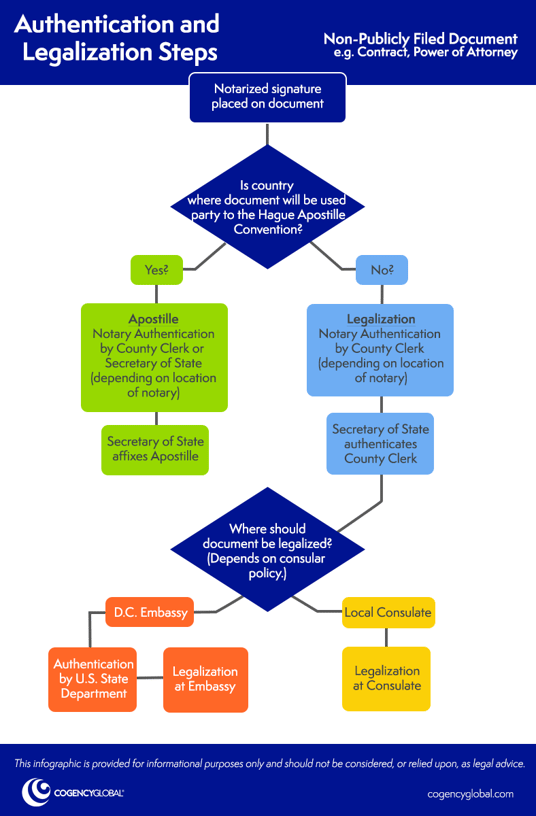
When presenting a document originating in one country for use in another, often the receiving party requires proof of authenticity for the signature and seals of the public official who executed, issued, or certified a copy of the document. The October 5, 1961 Hague Convention Abolishing the Requirement of Legalization for Foreign Public Documents, or Apostille Convention, has simplified the process of document legalization a great deal through a document called an apostille, which eliminates the need for an embassy or consular legalization. Over 120 countries are now parties to the convention.
For documents originating in the US destined for a country that is not a member of this Hague Convention, there are many more steps involved in the document legalization process (as outlined below). The process varies depending on whether you are legalizing public documents, such as certified copies of court documents, or private documents, such as corporate bylaws for a US company or a private contract.
Let’s take a look at how the legalization and authentication of documents works in different scenarios.
The Document Authentication and Legalization Process
For Publicly Issued State or Local Documents
For Non-Publicly Filed Documents
As what is being legalized is actually the signature and stamp or seal of a public official, the first step for a private document is to notarize an individual’s signature on the document. Since a notary is a public official, their signature and seal can then be authenticated and legalized.
For Publicly Issued Federal Agency Documents
Documents issued by a federal agency, such as the Patent and Trademark Office or the Comptroller of the Currency, follow a slightly different process for the legalization of documents.
Where to Authenticate Documents
For document authentication, some countries require documents to be presented to certain consulates based on where in the US the document originated. Others may not legalize a document based on whether specific forms have been completed or if they find certain content within the document objectionable.
A service company with experience working directly with these embassies and consulates can help you avoid problems and speed up the process.




